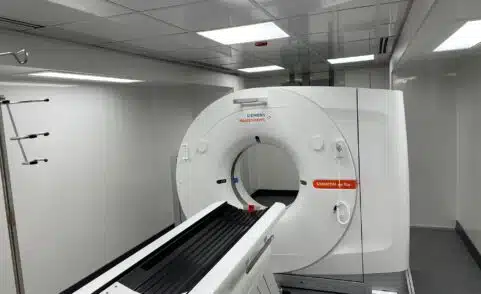
In the Field of Radiology You Need a Subspecialist, not a Generalist
The field of radiology has become so complex and has expanded and changed so quickly that today it plays an integral part in almost all fields of healthcare. As a patient, having a radiologist on your case that has a subspecialization can be vital. Subspecialized radiologists increase the quality of care patients receive. For example, RAYUS’s Dr. Kishan Yalavarthi is subspecialized in neuroradiology meaning he spends his days looking at brains and spines. In doing so, he’s providing his patients with a higher level of care and diagnosis than a general radiologist. When you have a subspecialized radiologist reading your images, Dr. Yalavarthi says, “You’re getting people who focus their practice and their experience on that specific area.”
Precision and Customization of Care
“The future role of radiology in healthcare,” a journal report published by the National Institutes of Health, points out why specialized areas of radiology are key to patient care, diagnosis, and treatment. The complexity of techniques and examinations, coupled with the importance of imaging as a diagnostic tool, make the radiologist’s skills more valuable than ever. When that radiologist is subspecialized, they are going to have a greater depth of knowledge within their area of expertise.
Think about it – if you were diagnosed with cancer, would you choose a general practitioner over an oncologist who specializes in your type of cancer? The same is true in radiology where musculoskeletal radiologists know more about your knee while breast radiologists are experts at looking at mammograms. Subspecialized radiologists are able to stay on top of the new developments and trends in their field. They also contribute more to the advancement of techniques within their field because they are focused on one specific area of the body. This leads to earlier intervention, focused attention and diagnosis for patients.
How Subspecialized Radiologists Help
Prior to a patient walking in and being scanned, our subspecialized radiologists and technologists have already reviewed your needs with your referring physician. The relationship between RAYUS’s referring physicians, subspecialized radiologists and technologists is collaborative. After your subspecialized radiologist identifies your specific needs and discusses any concerns with your physician, he or she works with a RAYUS technologist to find the exact protocols to be used for your specific situation. That means you are receiving customized care and getting the right scan the first time.
Dr. Blake Johnson, RAYUS’s Director of Neuroimaging, points out, “Considering the amount the field of medicine has learned about different disease states in different body parts, there’s really no way any one person can know enough about every subspecialty in radiology to provide the highest level of care.” For him, subspecializing in neuroradiology allows him to have a greater depth of knowledge in the brain, head, neck, and spine. When it comes to joints or the chest or abdomen, Dr. Johnson defers to his colleagues in RAYUS’s network of subspecialists who focus on those areas, in order to provide the best care to the patient.
Know What Kind of Radiologist You Are Getting
Having a team of subspecialized radiologists is a benefit that RAYUS provides our patients. Many hospitals providing imaging rely on generalized radiologists because having subspecialists means you need a bigger staff, which takes a bigger budget. But even if you find yourself in the hospital, it doesn’t mean you cannot get the subspecialized support you may need. In today’s environment, scans are more easily shared within medical settings and RAYUS’s radiologists are available to work with your physician to make sure you are getting the most accurate read of your scan, no matter the location. Remember, where you get your medical imaging is your choice. Talk with your physician about your imaging needs and make sure you are comfortable with your plan of care.
Dr. Julie Sullivan, a RAYUS breast radiologist, says as healthcare moves towards specialization, the focus and repetition of her job allows her to pick up very subtle changes on scans. For women receiving mammograms, seeing these subtle changes may mean identifying breast cancer at a very early stage. “That’s why I think having a fellowship trained breast imager or somebody who specializes in breast imaging is very important,” says Dr. Sullivan Whether you’re getting a mammogram or a brain scan, it’s worth asking your doctor or imaging provider this question: Is my radiologist subspecialized?
To find out more about how a subspecialized radiologist can help you get the best MRI read, click here.
